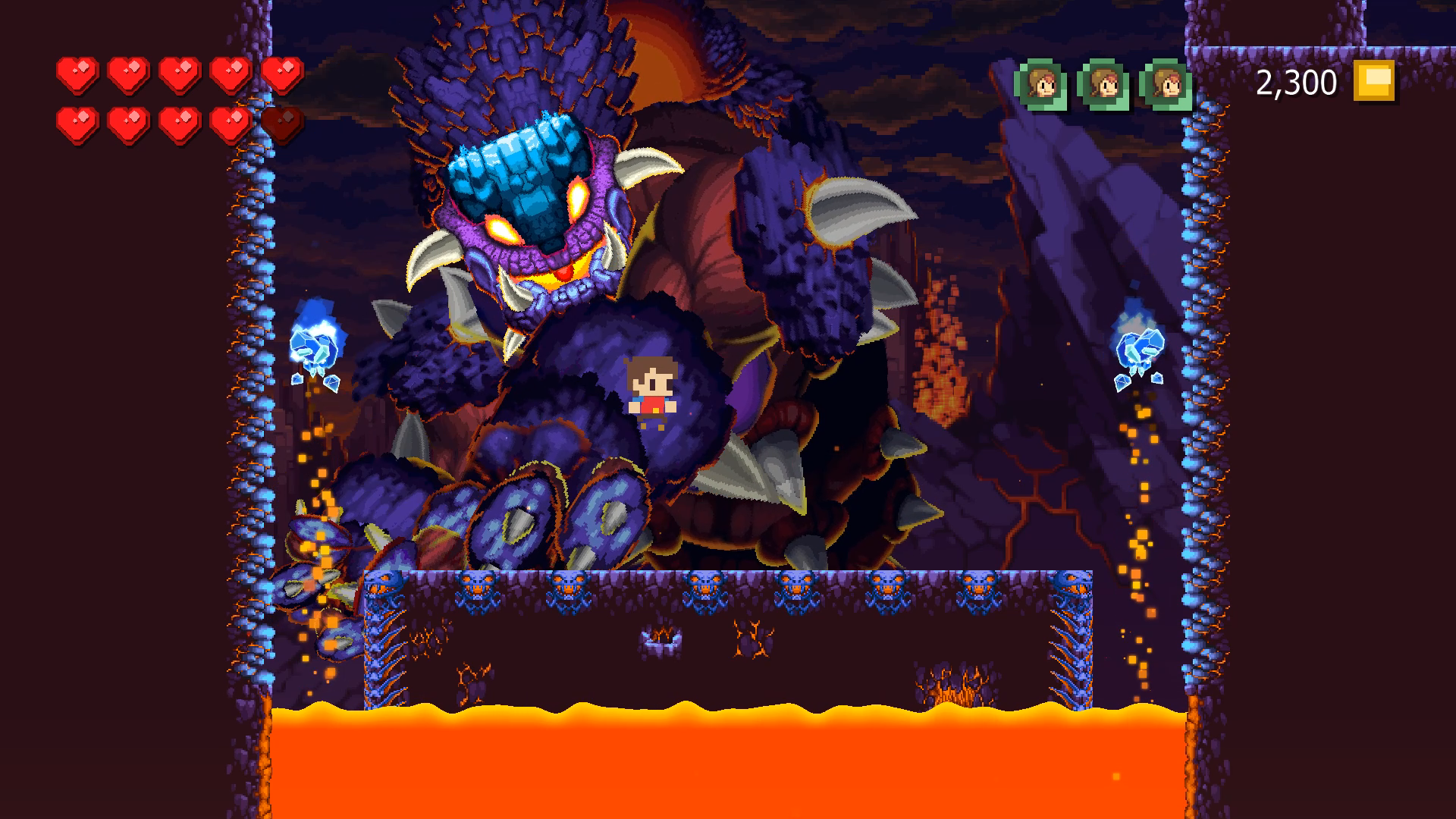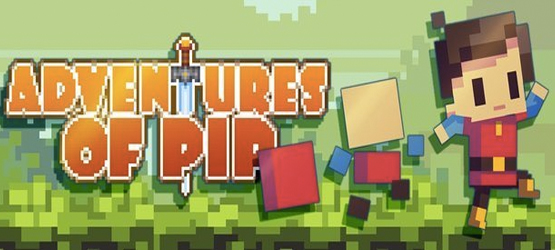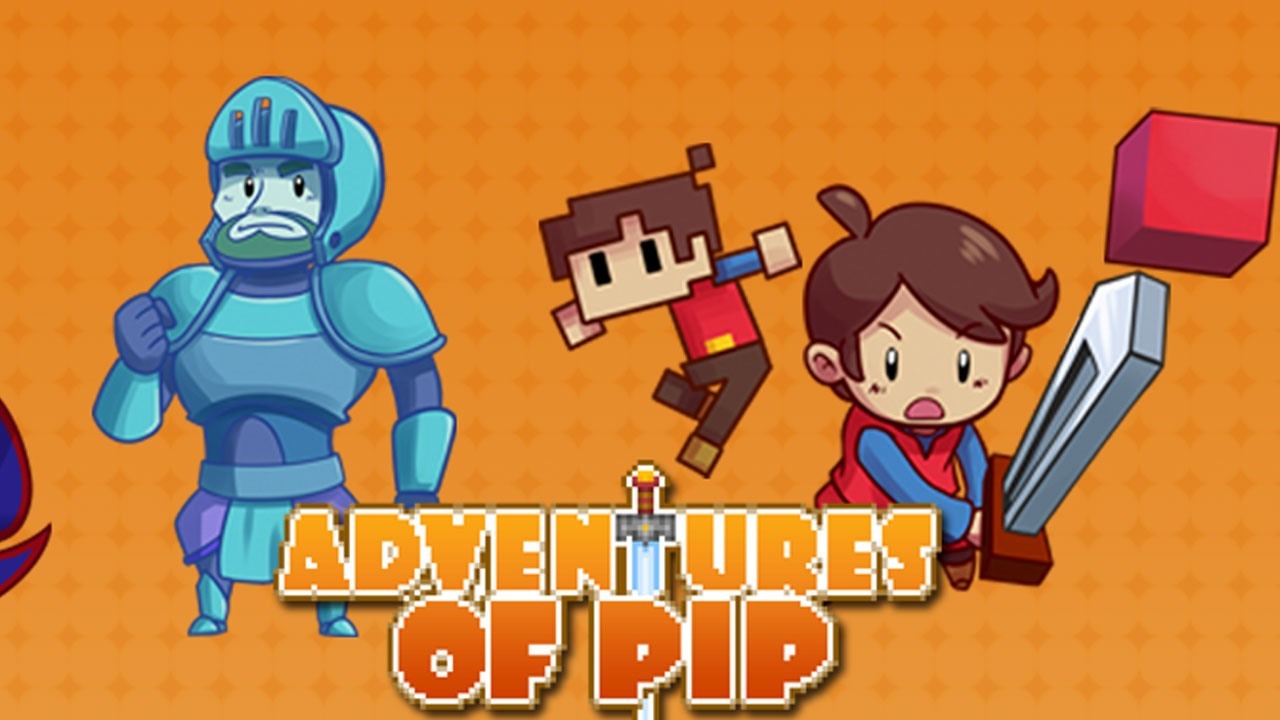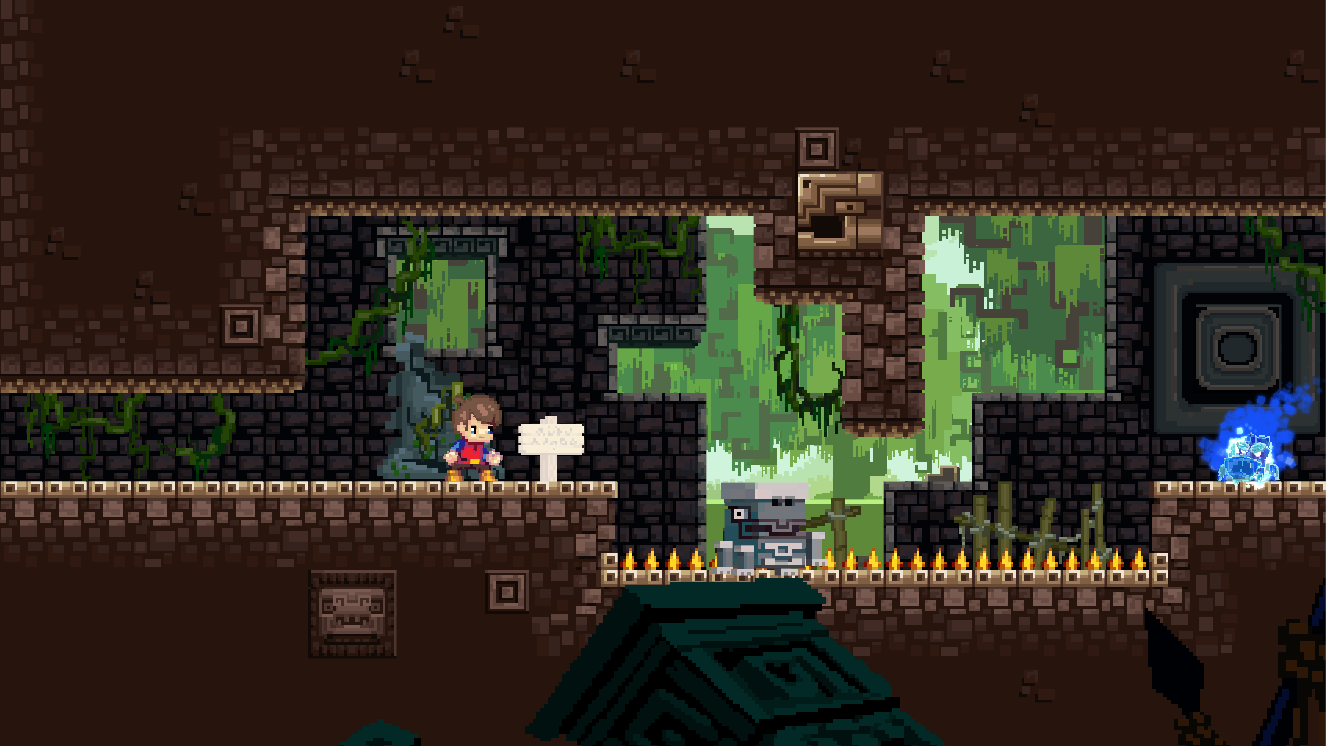Pixels are the building blocks of every game you’ve ever played and Adventures of Pip by Tic Toc Games takes this idea and turns it into a colourful and quaint platforming adventure. An evil sorceress has kidnapped the princess and is harnessing a great power known as the Bitverse to reduce the kingdom’s inhabitants from their high definition sprites into single colored pixels. It’s Pip’s job to fight fire with fire, evolving from a single pixel to a heroic and powerful sprite by harnessing the same power as the sorceress and using it to transcend the kingdom and retrieve the stolen princess.
Small Beginnings
Pip starts life as a single red pixel that can glide and slip through small spaces, however, after a brief chat with an ethereal knight, he’s granted the ability to absorb the pixels of fallen enemies to evolve into a more detailed and therefore more powerful sprite. Your agility and power alters with each of the three possible forms, from the base pixel form to a sword-swinging, high definition hero. Switching between these forms is key to navigating the stages so thankfully descending a form is as simple as holding Circle or L2 for a short while. Switching helps to forge pretty intricate levels that often require some backtracking and forethought to overcome. This is by no means an original mechanic, but its implementation is fluid and well placed, breathing some variety into the many stages.
It’s a well-needed variety too, as the stages strewn throughout the kingdom aren’t anything especially memorable. Although gloriously colorful and well designed, they tend to fall into the standard platformer themes of Forest, Underwater, Lava Castle and so on. The 32-bit aesthetic is undeniably charming and gives authenticity to the idea of a world built on pixels, especially with things like Pip’s hometown rebuilding as you progress throughout the game, complimenting this popular art style and its evolution. It’s just a shame that the eye-rolling at the generic level themes can rob from this aspect somewhat.
Super Pip Bros.
Mechanically The Adventures of Pip is incredibly tight with all three of Pip’s sprites proving easy to control in spite of their definitive differences. It takes a lot of inspiration from some classic platformers and seems to play like them too, the likes of Mario and Metroid often coming to mind. Puzzles tend to fall in behind the level themes, presenting largely mundane “move this block here” tasks that just prove to kill some time more than anything else. The checkpoint system can sometimes feel a bit arbitrary, with completed puzzles resetting upon respawns. Aside from overcoming the local beasties, Pip also needs to find the lost townspeople on each stage to garner a “Perfect” award, similarly to Rayman’s caged Electoons. It’s worth noting that although death resets puzzles, it does not reset discovered townspeople.
Creatures often pose little to no threat, merely adding dynamics to level explorations like using them to reach higher ledges or to evolve into a higher sprite. Later levels provide a slightly more challenging array of foes, but many descend into being irritating rather than challenging. There’s an option of revisiting the main town and purchasing some upgrades or boosters from merchants, however these are extortionately priced, presumably with the intention of encouraging players to return to previous levels and grind until their pixels bleed.
It’s an undeniably cute platforming adventure that’s sure to provide a good few hours of enjoyment, but this is mostly due to it not stepping out of the norm. The Adventures of Pip does little wrong simply by not doing much at all, its colorful stages, tight mechanics and often humorous writing are all disappointingly dulled by an overwhelming and unshakeable sense of déja vu.
Review copy was provided by the publisher. For information on scoring, please read our Review Policy here.
-
Cute and colorful aesthetics
-
Humorous writing
-
Tight character controls
-
Stereotypical level themes
-
Repetitive gameplay
-
Arbitrary checkpoint system
The Adventures of Pip Gallery
-
6 720x405
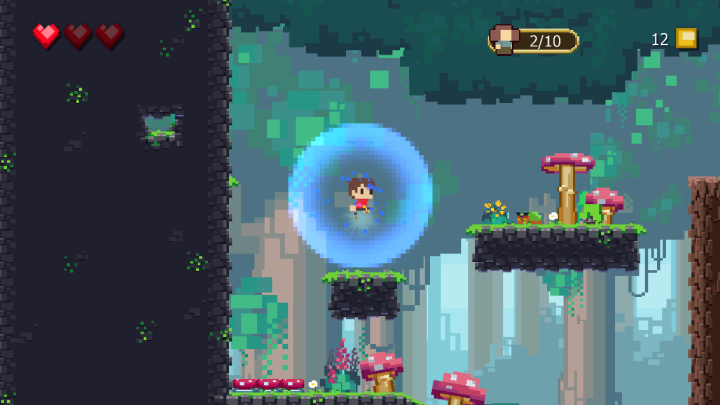
-
Adventures of Pip Header
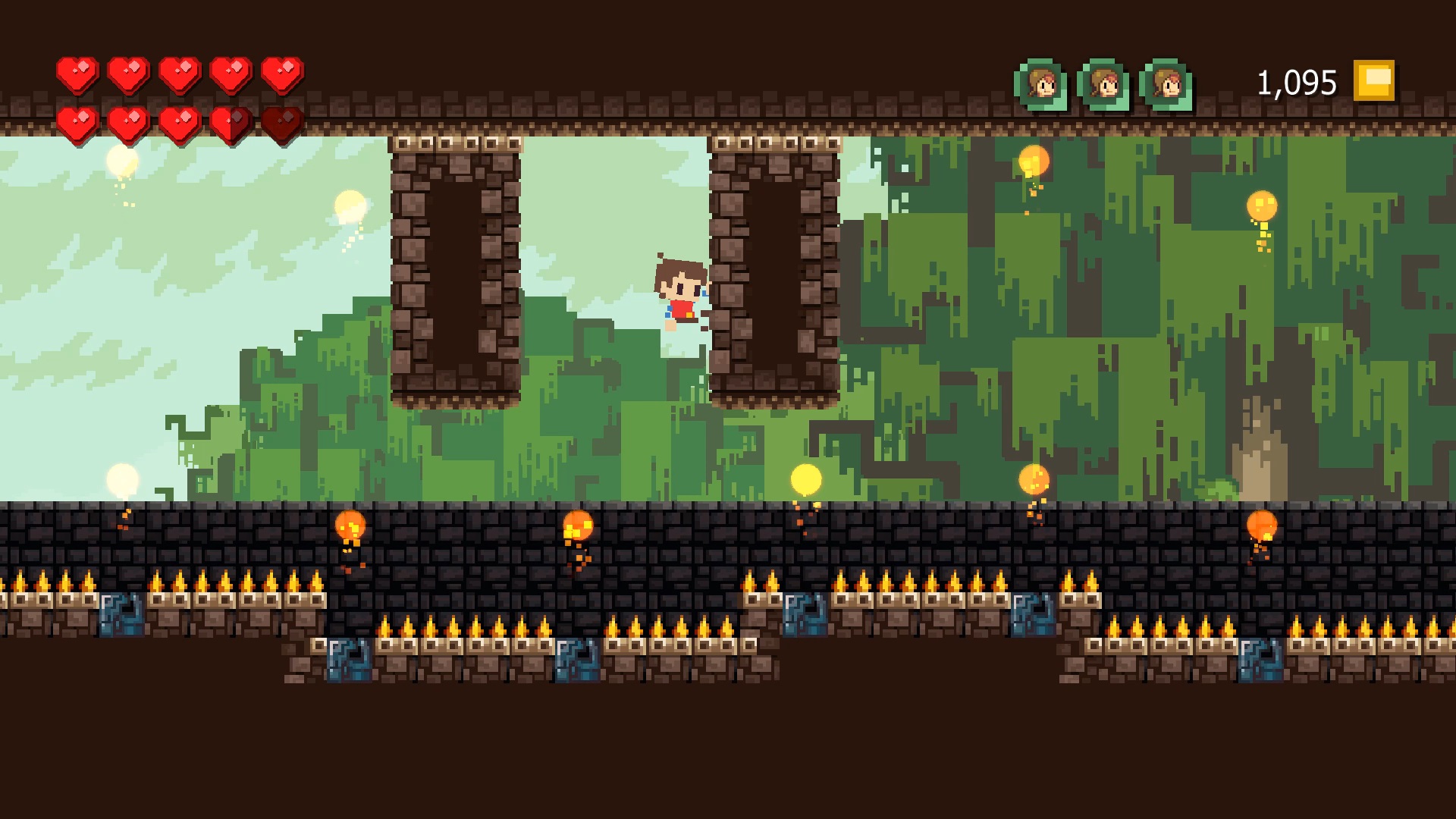
-
Adventures of Pip The Alicia Cameo
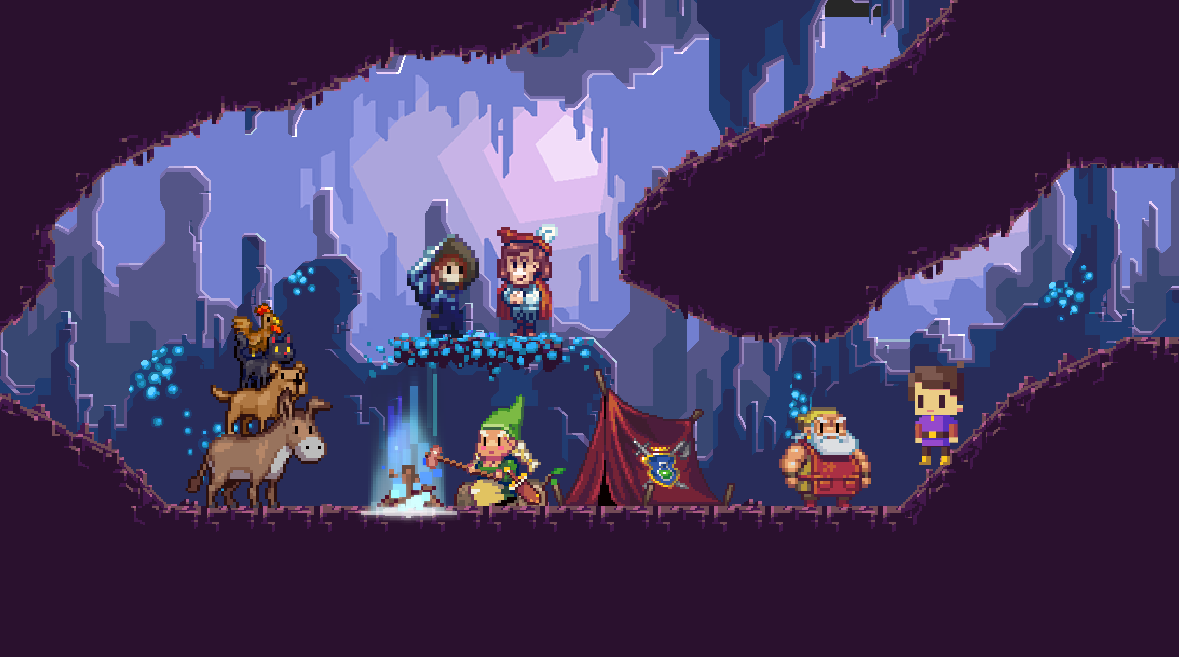
-
Advofpip
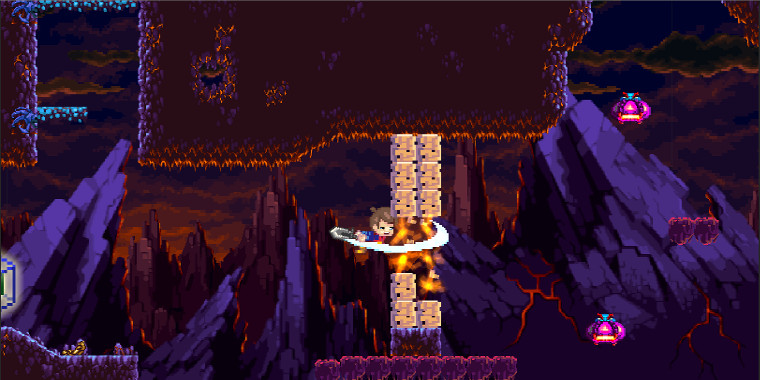
-
Dfd3b82a90709c1408bc0a4cb448c6c2
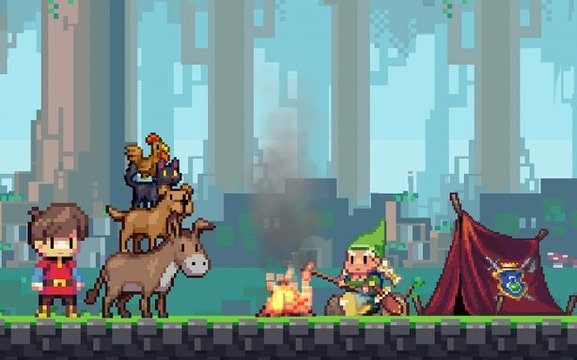
-
Pip_spe_005
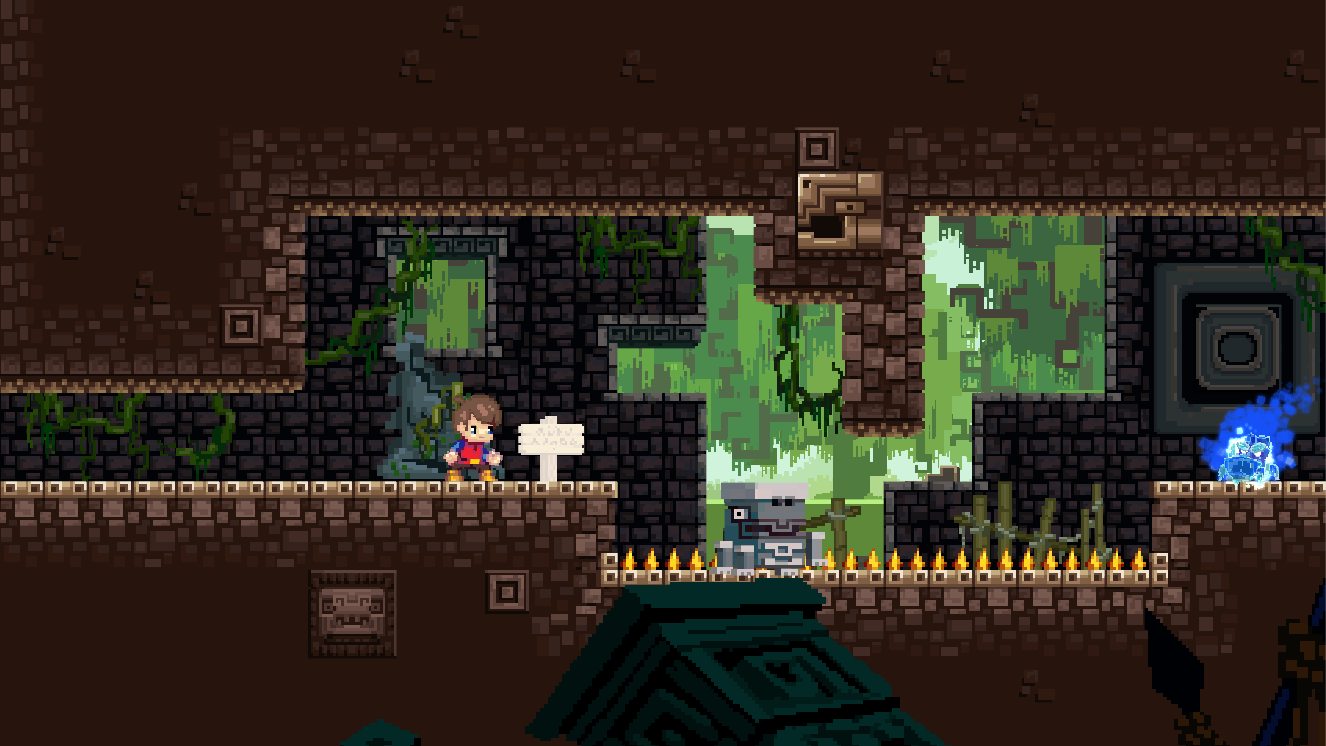
-
Sequence 01 Still019 Copy
